
In a certain light (Con cierta luz), the project by Nicole Remy, was one of the six selected in last year’s INPUT, our space for Advice on Cinematographic Projects in Development. Tutored by Albert Alcoz, a filmmaker, researcher and programmer, In a certain light (Con cierta luz) won the eSe8_LAB 2023 Creation award from out of all the projects participating.
Thanks to this award, the filmmaker was able to travel to Victoria (Australia) to work side-by-side with two of the global leaders in experimental cinema, Richard Tuohy and Dianna Barrie, in their NanoLab facilities.
Nicole describes her research into the other physical dimension of cinema—motion—and how, as her practice progressed, there was a gradual revelation of the way she herself relates to the environment and portrays it. Don’t miss this interview, which captures a unique experience in this field.
– Could you give us a short introduction to your project In a certain light?
This project works on the Super 8 film cartridge itself to use it as a movie camera by means of a pinhole device technique. With an aluminum plate above the viewfinder enabling six frames of film to be seen, and with a hand-sliding shutter, light then bathes the film through the holes.
This project “In a certain light” (A certain light) is based on an online workshop on pinhole cameras in Super 8 taught by Dianna Barrie and Richard Touchy (Nanolab), which they did for the (S8) festival in 2020. It started out as a simple curiosity and gradually developed into an interest in searching for another type of motion in cinema: something that dispensed with a motorised camera and lens, seeing how far a moving image can go.
Richard and Dianna opened up the doors of Nanolab to me in Daylesford, Victoria (Australia) for a month, where they were able to share with me the different processes involved in creating pinhole cameras, developing processes, image processing, etc.
In a certain light takes us on a tour of all the different processes of capturing light through pinholes, with the help of an accompanying cassette recorder. It is one step between the inside and outside, between walking forwards and turning in circles. On this occasion, I was able to include sound work parallel to the construction of the cameras and filming: what the space sounds like that I inhabit, walk around and film
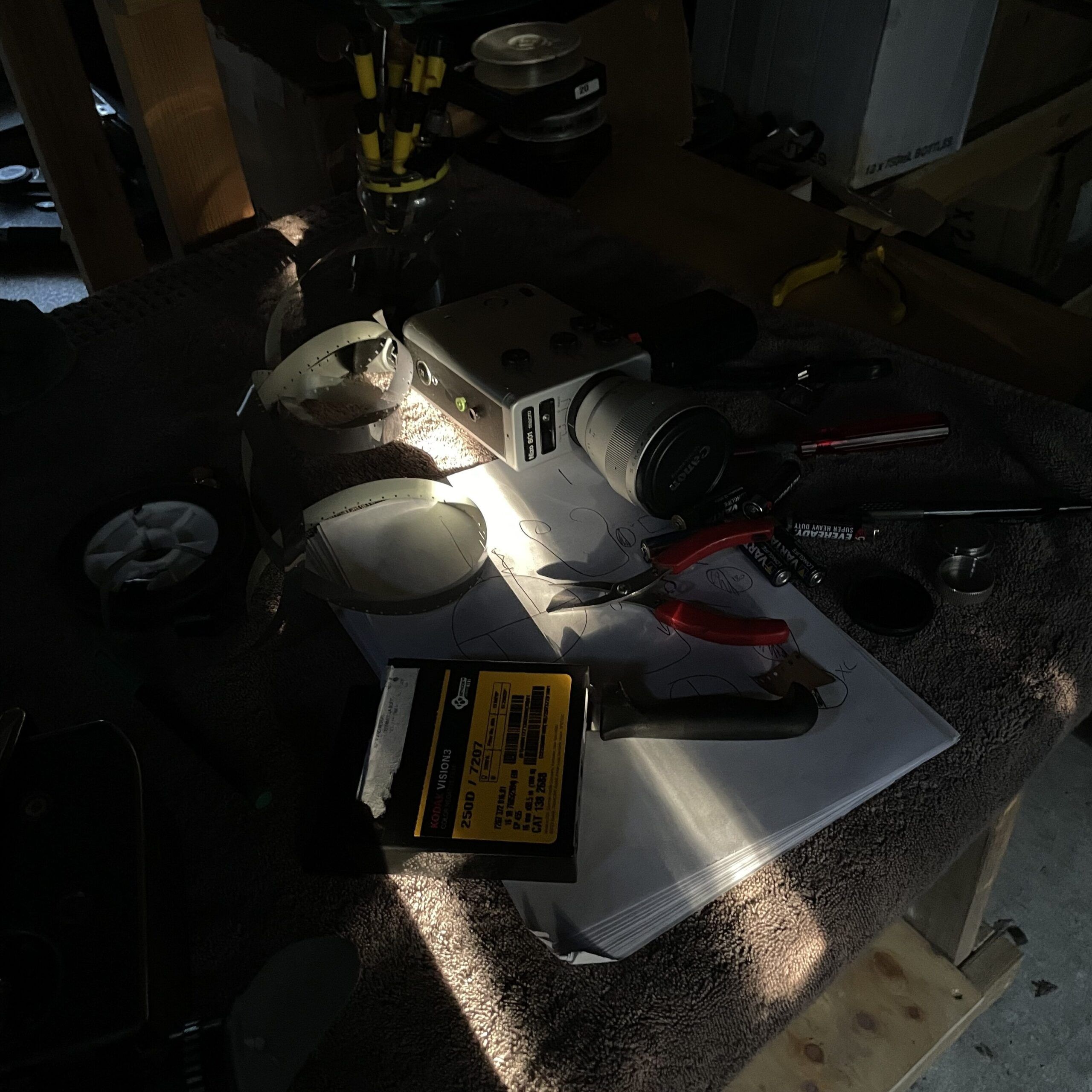
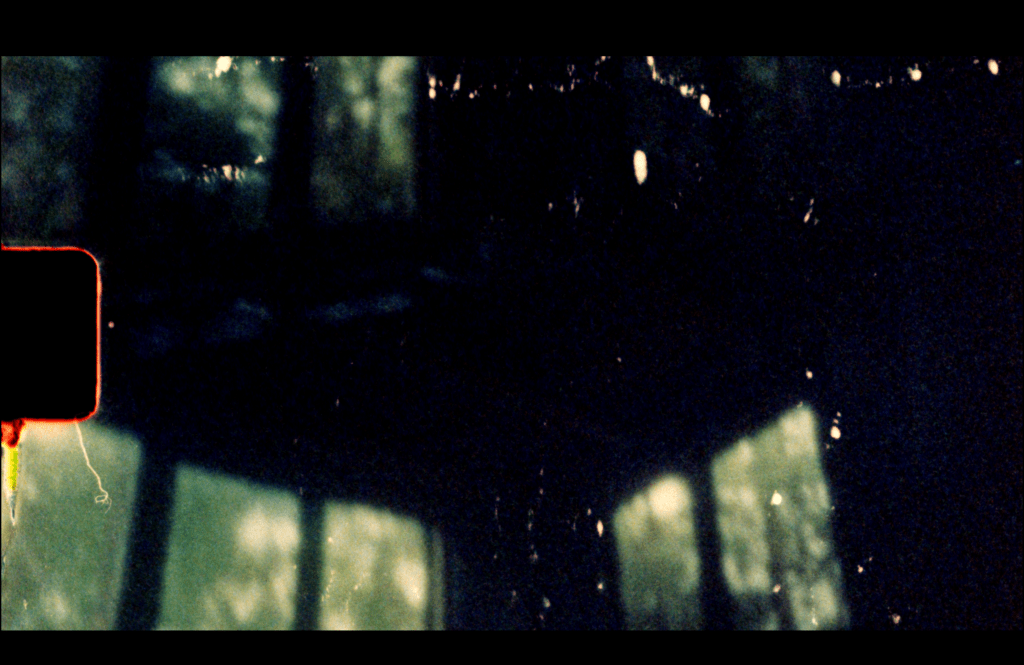
– Tell us briefly how the process of creation is going at NanoLab (Victoria, Australia).
It’s a rather cyclical process: taking a roll of Super 8, adapting it to become a pinhole camera, then going out and filming. I usually have long walks through the forest, and on returning to the cabin where I’m staying I finish the cartridge, portraying the space. Then the development of the cartridge continues, either processing it by hand or with the developing machine. The next day, with Dianna’s help, we scan the film and see the results. Using these notes, I make the necessary changes in order to film with the next cartridge.
Later on in this process, I digitally edit the light and colour grading of these scanned files, so that they are then filmed from the screen at 16 mm, and in the end I make the final copy with the optical printer.
At the same time, I worked on the sound with a cassette recorder, which honestly doesn’t work very well and has to be handled to be consistent when recording. I managed to find a bridge between the Super 8 camera and this recorder; both have a marker that sounds similar and constant. Sometimes the motor has to be pushed manually, almost like the camera. I was recording the inside of the cabin where I was, and interspersed it with recordings of the walks in the forest. It’s the same game of entering and exiting, sometimes coinciding with the image, sometimes not… I worked on those times independently.
– How is the experimental film community doing in Australia, and what feelings does it convey to you to be able to work in a space like NanoLab?
Being able to be at Nanolab has been a unique experience. It’s not only a film laboratory that has all the necessary equipment; it is also the home of Dianna and Richard that they have been building since 1997. Being able to learn to work with their equipment, all modified by them, and at the same time being able to feel at home sharing everyday life with them, has been the most important thing about this experience. They have a lot of passion for teaching, with unique affection and humour.
I’ve been lucky enough to be able to meet an incredible collective called the Artist Film Workshop. It’s an organisation where processes and resources for filmmakers and artists in Melbourne are shared, with screenings and workshops for anyone interested. They were the ones who hosted us for a screening of collective films made in past LAVs, which took place on 24 March. They also helped me organise a Super 8 pinhole camera creation workshop with the collective’s members, using the techniques taught by Dianna Barrie and Richard Tuohy. AFW is a community that has a laboratory for artisanal film developing, optical printers and projectors. They also work on image post-production with MemoryLab (film scan), and are constantly seeking to hold screenings with different artists from other parts of the world, while connecting with various independent and creative spaces in the city. It’s a very open space to teach, share and delve into your work.
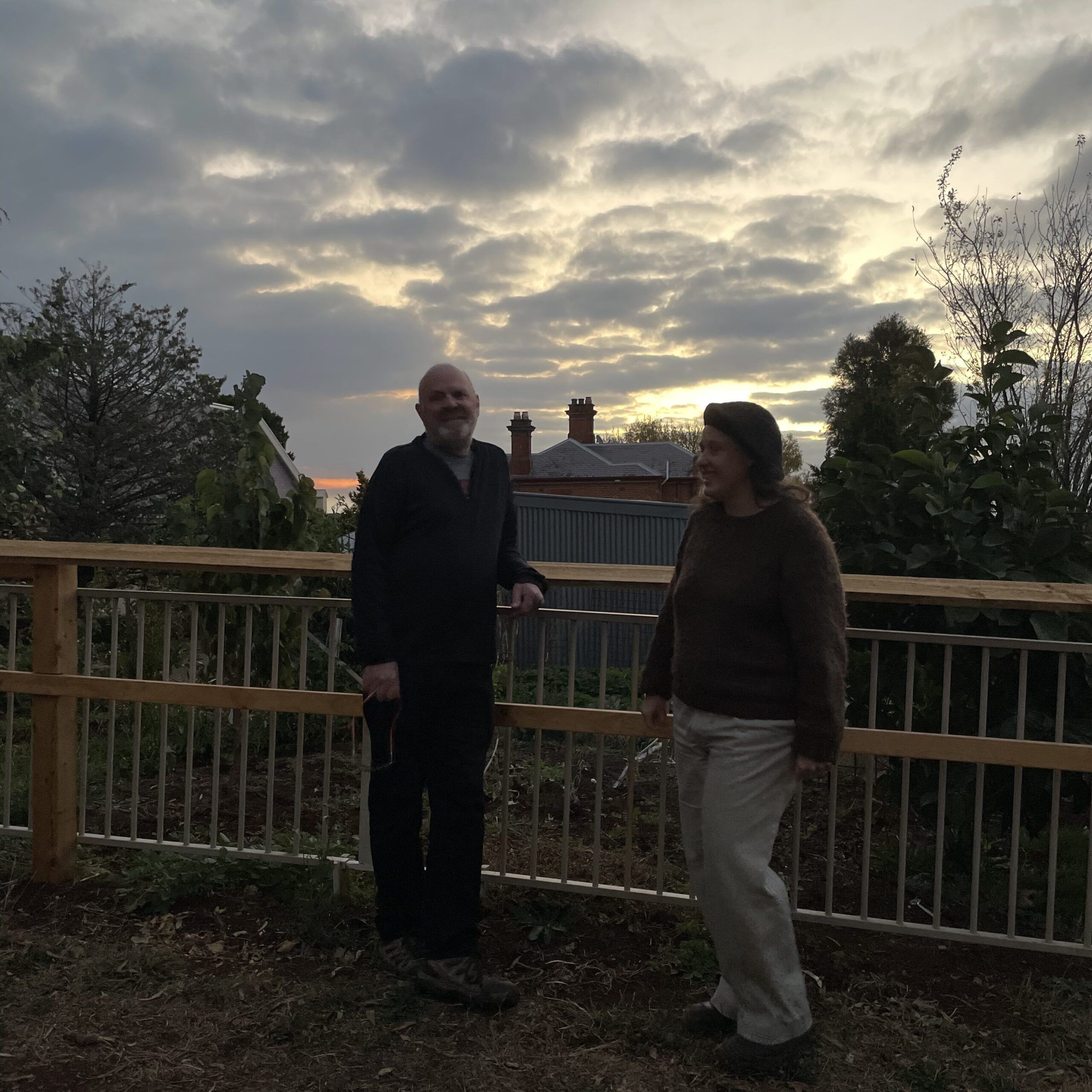
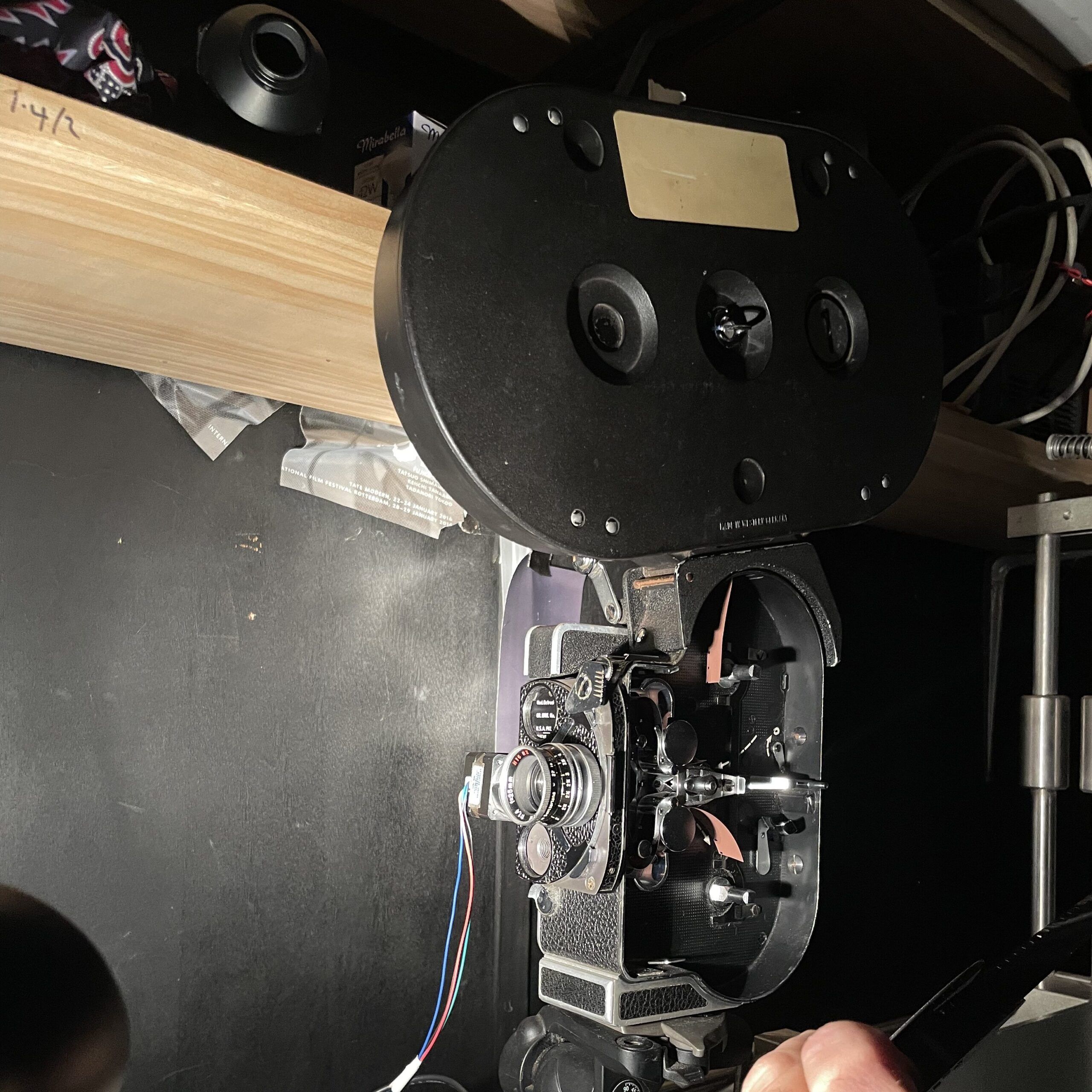
– Your work stands out in technical exploration and knowledge of creative processes in the photochemical medium. How has your time at NanoLab influenced your work’s artistic development? What are you looking into there?
On being a technical exploration, the question of “what to film” has often remained in the course of this research. I questioned the image a lot. Then I began to film whatever was nearby, with the excuse of doing tests. I portrayed the space I was in, my work table, my walks; it became a diary of the research process. Little by little, I included spaces and people that meant something to me; as I did on my last trip to Lima (June 2023), where I was able to portray my family and their surroundings. Then in Daylesford, I portrayed the walks and paths. I showed the way I related to the space where I was living and working.
It was then that I began to realise that I’m constantly portraying what is immediately around me, recording where and how I am. That line between “practice” (if not “work”) and personal subject matter becomes increasingly blurred. Everything coexists along the same line, the inside and the outside, the near and the far.
– What stimuli do you find in the analogue format of images in motion, and what do you think this choice contributes to your creative process?
It’s a tactile, physical and sound-based way of relating to cinema. The film and its components are present in such a way that it allows you to touch it, to handle it with your own hands, observe how it reacts, and even hear how the film is being transported while filming. There is a direct, present relationship with the material. In this process of creating cameras, each decision of how it is constructed influences the outcome of the image it captures; the tension of its parts, the distances and sizes. Also, in terms of sound, on being on magnetic tape, both mechanisms have a circular, repetitive and constant characteristic, which is a matter I have been exploring through the aspect of image, sound and temporality.
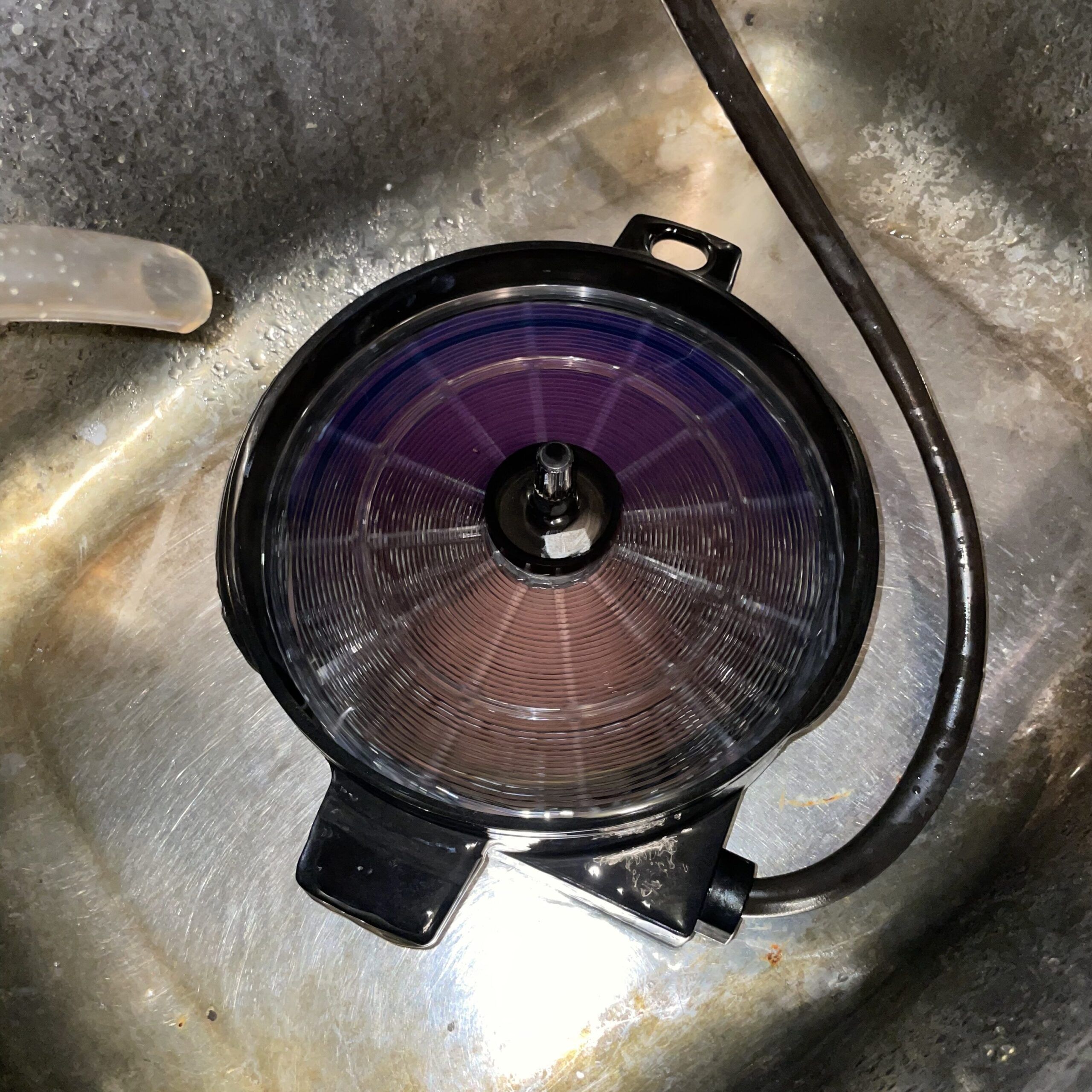
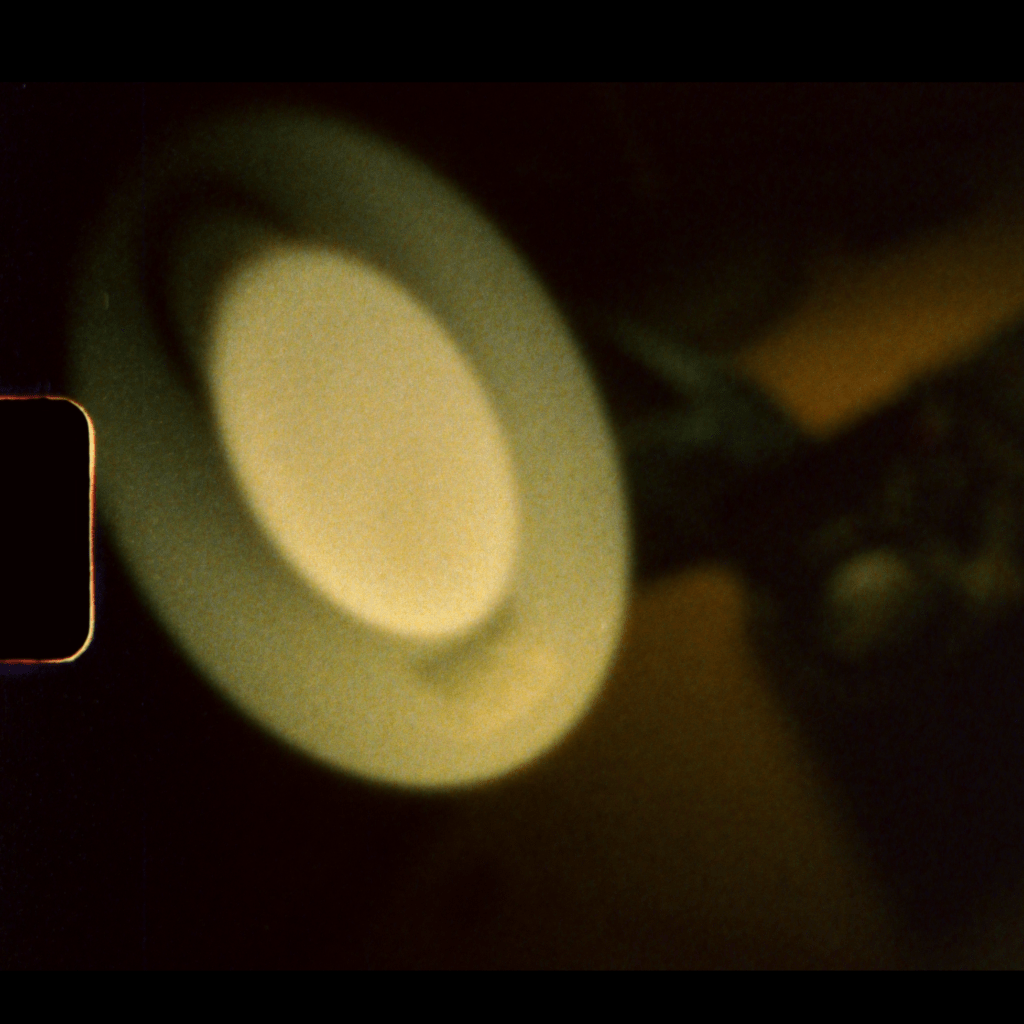
– What stage of the process is the project currently at, and what are the next steps going to be?
As I wrote this, I was already nearing the end of the filming project. It feels better for me to write it now than it did a few weeks ago. And everything will make even more sense in a few more weeks, or months, and so on… Now, I’m returning to Madrid with the final copies of the film that I’ll be able to show in the next (S8), including the sound work on a cassette. The next steps will involve testing the screenings and sound on a screen and in a space.





